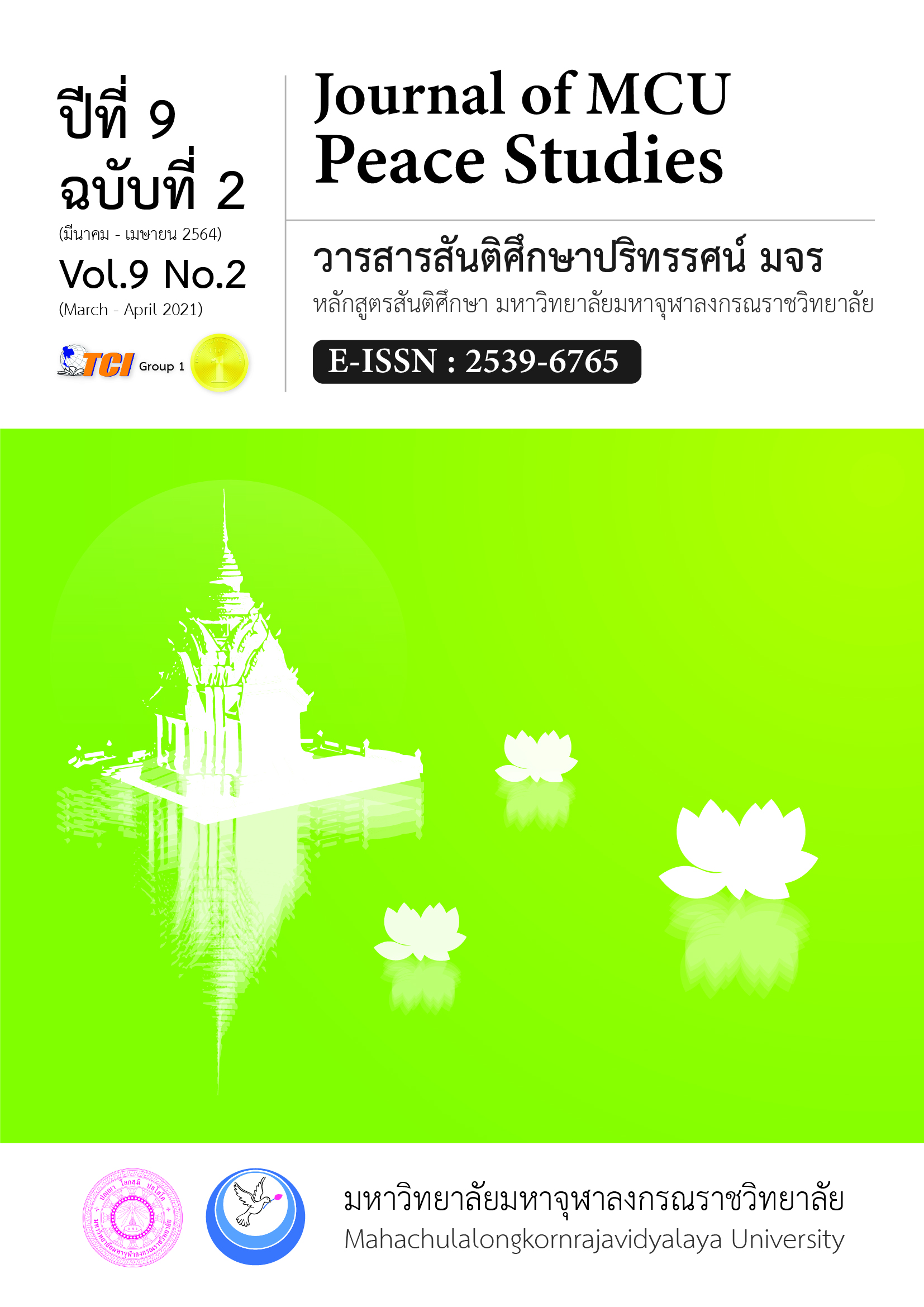กลยุทธ์การตลาดเพื่อเพิ่มศักยภาพการแข่งขันของคลินิกเสริมความงาม ในภาคตะวันออกเฉียงเหนือของประเทศไทย
Main Article Content
บทคัดย่อ
บทความวิจัยนี้มีวัตถุประสงค์1) เพื่อศึกษาสถานภาพปัจจุบันของการดำเนินงานคลินิกเสริมความงามในภาคตะวันออกเฉียงเหนือของประเทศไทย 2) เพื่อวิเคราะห์ปัจจัยสำคัญที่มีผลต่อการเพิ่มศักยภาพการแข่งขันของคลินิกเสริมความงามในภาคตะวันออกเฉียงเหนือของประเทศไทย 3) เพื่อนำเสนอกลยุทธ์การตลาดเพื่อเพิ่มศักยภาพการแข่งขันของคลินิกเสริมความงามในภาคตะวันออกเฉียงเหนือของประเทศไทยภายใต้การวิจัยเชิงปริมาณ กลุ่มตัวอย่างที่ใช้ในการวิจัย คือ ผู้ประกอบการคลินิกเสริมความงาม จำนวน 340 ราย เกณฑ์ 20 เท่าของตัวแปรสังเกตได้ 17 ตัวแปร เครื่องมือที่ใช้ในการวิจัย คือ แบบสอบถาม สถิติที่ใช้ในการวิเคราะห์ข้อมูล ได้แก่ จำนวน ค่าร้อยละ ค่าเฉลี่ย ส่วนเบี่ยงเบนมาตรฐาน การวิเคราะห์องค์ประกอบเชิงยืนยัน และการวิเคราะห์โมเดลสมการโครงสร้าง
ผลการวิจัยพบว่า 1) การดำเนินงานของคลินิกเสริมความงามในภาคตะวันออกเฉียงเหนือของประเทศไทย คือผู้ประกอบการคลินิกเสริมความงามส่วนใหญ่เป็นเพศหญิง มีอายุไม่เกิน 30 ปี การศึกษาระดับปริญญาตรี มีประสบการณ์ในการทำงานไม่เกิน 5 ปี และส่วนใหญ่เป็นคลินิกสาขา คลินิกเสริมความงามมีจำนวนแพทย์และพนักงานให้บริการไม่เกิน 5 คน จำนวนลูกค้าที่มาใช้บริการไม่เกิน 100 คนต่อเดือน และระยะเวลาในการดำเนินงานไม่เกิน 5 ปี 2) ปัจจัยสำคัญที่มีผลต่อการเพิ่มศักยภาพการแข่งขันของคลินิกเสริมความงาม คือส่วนประสมการตลาดบริการ การบริหารลูกค้าสัมพันธ์ นวัตกรรมและศักยภาพการแข่งขันโดยรวมอยู่ในระดับมากทุกปัจจัย และ 3) กลยุทธ์การตลาดเพื่อเพิ่มศักยภาพการแข่งขันของคลินิกเสริมความงาม ประกอบด้วย (1) กลยุทธ์การบริหารลูกค้าสัมพันธ์: ความพึงพอใจของลูกค้า ความภักดีของลูกค้าและภาพลักษณ์ตราสินค้า (2) กลยุทธ์นวัตกรรม: นวัตกรรมผลิตภัณฑ์ นวัตกรรมองค์กรและนวัตกรรมกระบวนการ(3) กลยุทธ์ส่วนประสมการตลาดบริการ: ผลิตภัณฑ์ ราคา ช่องทางการจำหน่าย ส่งเสริมการตลาด บุคลากร ให้บริการ กระบวนการ กายภาพและผลิตภาพ ผลของการวิจัยนี้ ผู้ประกอบการคลินิกเสริมความงามสามารถนำข้อค้นพบเป็นข้อมูลในการเพิ่มศักยภาพการแข่งขันของธุรกิจเสริมความงาม โดยนำนวัตกรรมมาใช้ในการให้บริการเพื่อตอบสนองความพึงพอใจของลูกค้า
Article Details
ทัศนะและความคิดเห็นที่ปรากฏในบทความในวารสาร ถือเป็นความรับผิดชอบของผู้เขียนบทความนั้น และไม่ถือเป็นทัศนะและความรับผิดชอบของกองบรรณาธิการ ยินยอมว่าบทความเป็นลิขสิทธิ์ของวารสาร
เอกสารอ้างอิง
Aungsuchot, S., Wijitwanna, S., & Phinyopanuwat, R. (2011). Statistical Analysis for Researchingon Social science and Behavioral science: LISREL program technical. (3rd ed.).Bangkok:Charoendeemunkong Press.
Bangkokbiznews. (2018). Wuttisak Group confirmed Aesthetic Health Business grow continuously. Retrieved January 26, 2018, from http://www.bangkokbiznews.com/
Bureau of Sanatorium and Art of Healing. Department of Health Service Support. Ministry of Public Health. (2014). Statisticalof Private hospitals fiscal year 2014. Retrieved May 8, 2018, from http://www:mrd.hss.moph.go.th/
Caroline Tan Swee Lin. (2014). Competitive Advantage for Fast Growth SMEs: A Study of the Effects of Business Orientation and Marketing Capabilities on Firm Performance. Retrieved December 20, 2019, from https://link.springer.com/chapter/10.1007/978-3-319-11779-9_107
Mohammadi, C. V. (2017). Customer relationship management: Innovation and performance.International Journal of Innovation Science, 9(4), 374-395.
Chesbrough, H. (2003). Open Innovation: The New Imperative for Creating and Profiting from Technology. Harvard Business School Press: Brighton.
Elrod J. K., & Fortenberry J. L. (2018). Catalyzing marketing innovation andcompetitive advantage in the healthcare industry: the value of thinking like anoutsider. Retrieved December 16, 2019, from https://link.springer.com/article/10.1186/s12913-018-3682-9
Kasikorn Research Center. (2017). Beauty opportunity. Journal of Kasikorn Thai Bank. December 2017.
Lawson, B., & Samson, D. (2001). Developing innovation capability in organisations: a dynamic capabilities approach. International Journal of Innovation Management, 5(3), 377- 400.
Lin, R.J., Chen, R.H., & Chiu, K.K.S. (2010). Customer relationship management and innovation capability: anempirical study. Industrial Management & Data Systems, 110(1), 111-133.
Min, L., Tao, L., & Bin H. (2011). A study on the relation among customer perceived value, customer satisfaction and customer value of service enterprises. Retrieved November 11, 2019, from https://ieeexplore.ieee.org/document/597437
Panayides, P. (2006). Enhancing innovation capability through relationship management and implications for performance. European Journal of Innovation Management, 9(4), 466-483.
Yao, Q., Gong, S., & Wei, H. (2016). Marketing Capabilities Drive Competitive Advantages: Evidence from China’s Agribusinesses. Retrieved November 12, 2019, from https://link.springer.com/article/10.1007/s40003-016-0214-x
The Center for Economic and Business Forecasting. University of the Thai Chamber of Commerce. (2016). 10 outstanding business in 2017, Health continuous beauty. Retrieved December 5, 2016, from http://www.cbre.co.th/propertynews/


